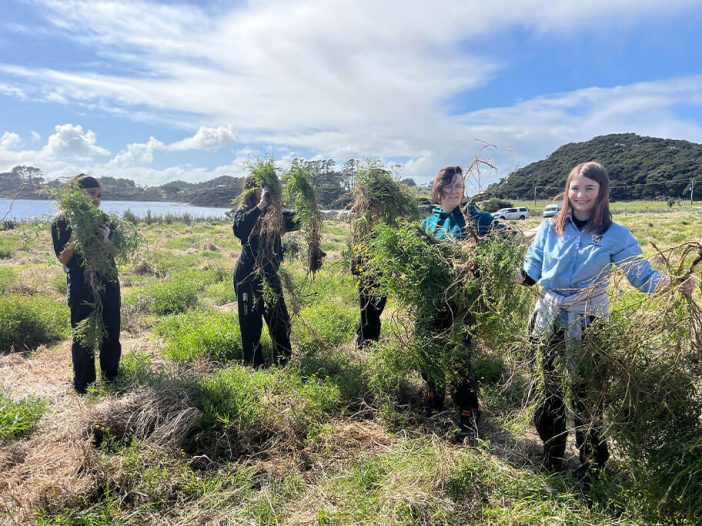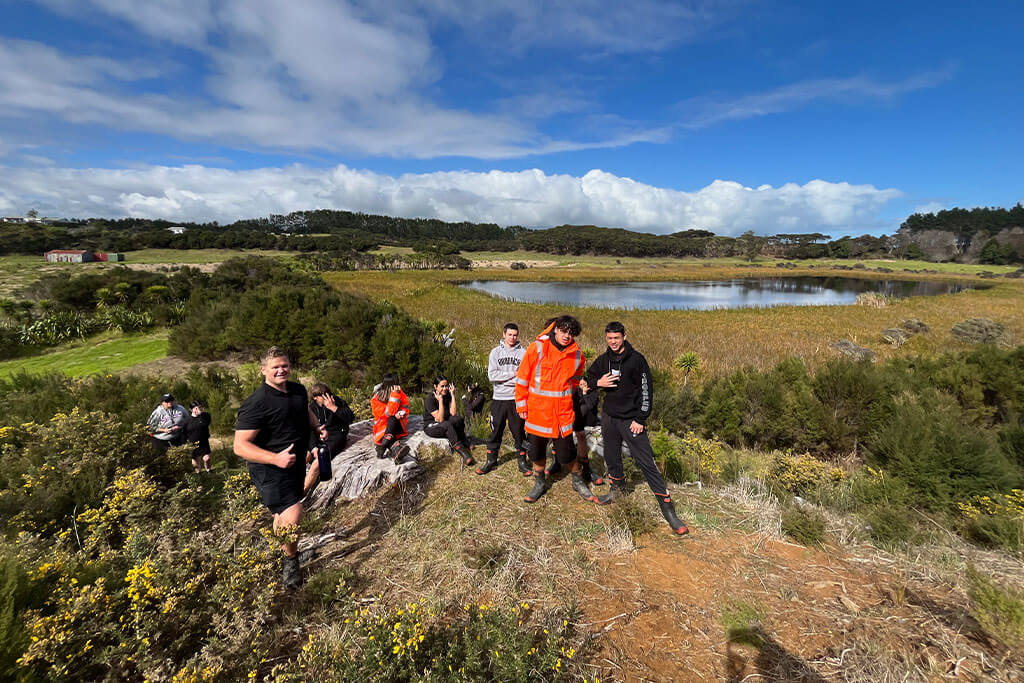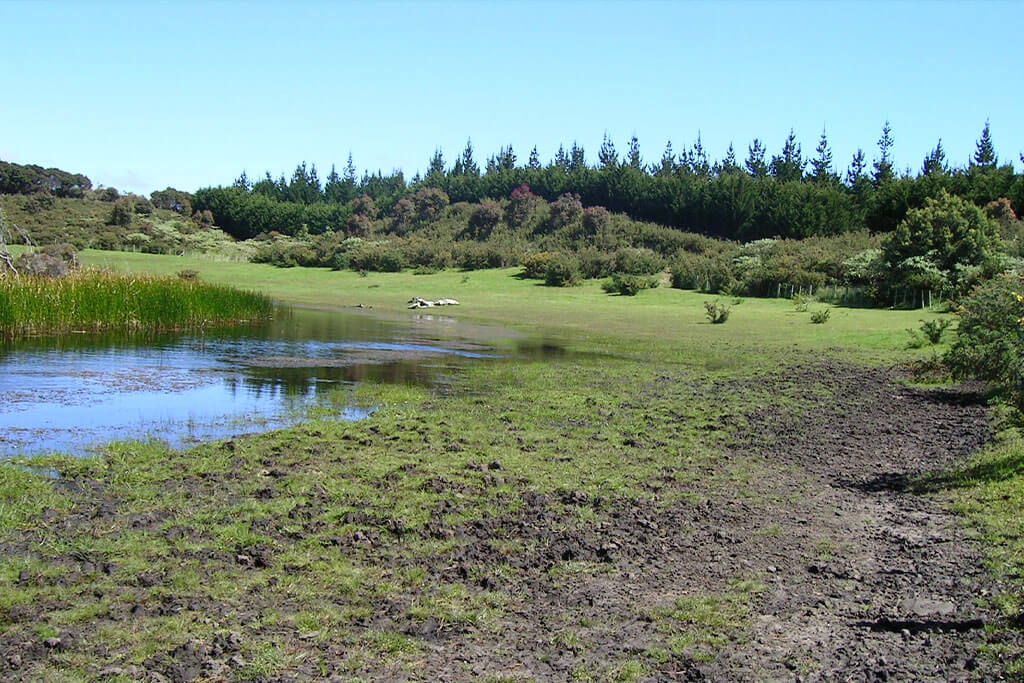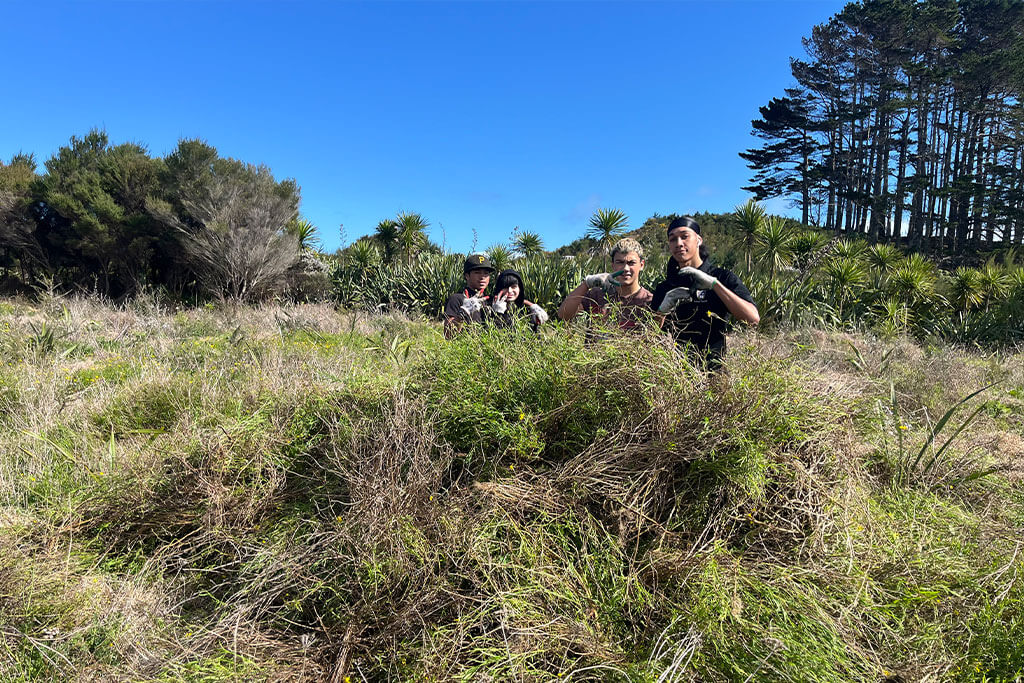
Last week, Summit Forests hosted three classes from Kaitaia College’s Tūranga Kāinga programme at Lake Gem, marking our third year of partnership. This hands-on experience is part of the students’ environmental education, teaching them about dune lakes, wetland ecosystems, and community restoration projects.
In previous visits, the students have gotten hands-on and contributed to the restoration of Lake Gem by marking out a new recreational track, planting native species, and building a stile for better access. This year, they learned about the challenges of plant competition, weeding, and the importance of caring for new plantings. Weeding may not be everyone’s favourite job, but the students got stuck in and impressed Summit Forests’ environmental planner Karen Lucich with their mahi.



The week before, on another visit to Lake Gem, Stephen Yuretich from The Bushland Trust educated students about pre-human wetlands, a vital part of Northland’s ecosystem. Wetlands once covered 32% of Northland’s land area, but only 5.5% remains today. He also covered off eco-sourcing (collecting seeds close to where they are to be planted so plants are suited to local conditions and more likely to survive) and kuta – the tall wetland reed that grows in water and assists with water clarity and aeration of sediments. Kuta is also prized for weaving soft hats, mats and kete; Lake Gem is a special resource for local weavers.
Today, Lake Gem is valued not only for its ecological importance but also for its recreational tracks, weaving resources, and educational opportunities. Through our ongoing partnership with Kaitaia College and other community groups, Summit Forests is proud to support students in their studies, helping them develop a deep understanding of environmental stewardship and the vital role they can play in protecting our natural world. By involving students in Lake Gem’s restoration, we hope to inspire them to become future kaitiaki (guardians) of these irreplaceable ecosystems.